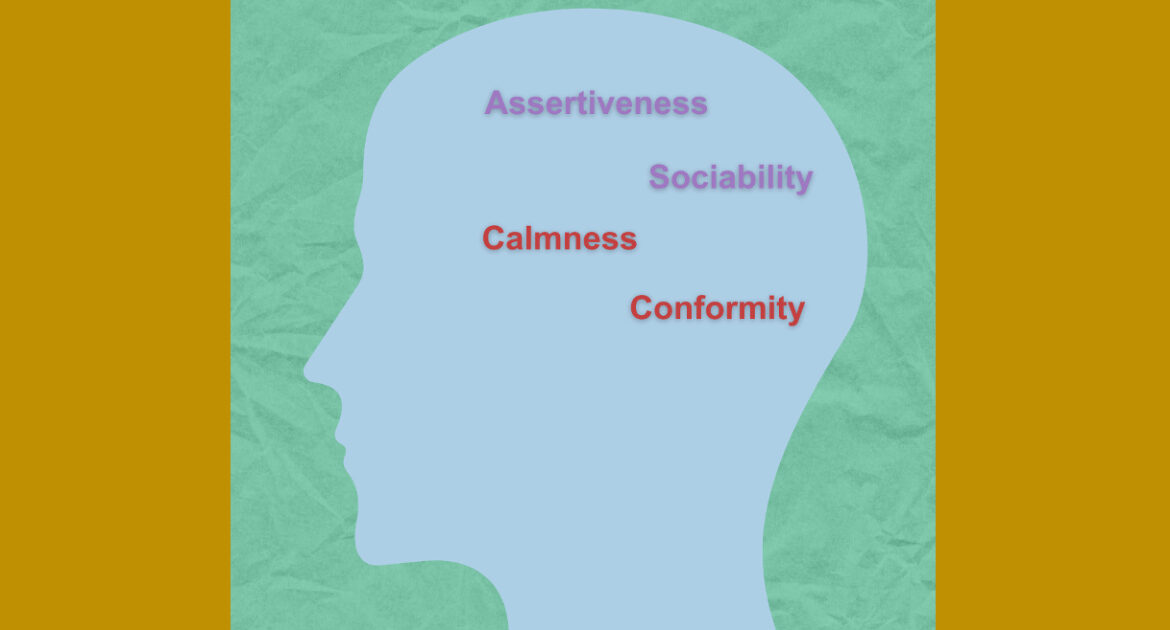How Calm or Anxious Are You? How Conforming or Big-Picture Are You?

As a leader, is your behavior aiding or hurting the outcome you hope to achieve?
Have you ever seen a leader who remains remarkably calm under pressure? Consider Captain “Sully” Sullivan, who, in January 2009, safely landed a passenger plane on the Hudson River without any casualties after birds struck the engines.
Consider the visionary leader who sees possibilities beyond obstacles while others concentrate solely on barriers. Steve Jobs exemplified how big-picture thinkers can shift their approach from vision to execution. He didn’t depend on focus groups, as they wouldn’t grasp his vision; he was remarkably forward-thinking. Once he moved to the execution phase, his attention to detail was extraordinary—he even insisted that the screw heads align north to south within the Macintosh computer, even though no buyer would ever see them!
The behaviors we admire and respect in others reside within us, even if they are not fully developed for high-pressure situations. Most behavioral assessments focus on four key traits: assertiveness, sociability, calmness, and conformity. We exhibit a bias in each behavior that ranges from low to high. Individuals displaying extraordinarily high or extremely low levels of these behaviors do not need an assessment.
Last week, we examined Assertiveness and Sociability. This week, we will examine Calmness and Conformity.
Calmness
As we discussed, there’s no right or wrong in our behavior unless it fails to help us achieve the desired outcome. Calm individuals focus on one main priority at a time and carry it out effectively. This is beneficial when engaging in complex design or research. However, it was not helpful if you were trying to buy a house during the COVID pandemic! If you waited for more information, the house would be gone.
On the scale below, which words best describe you in your most natural state when you are not fully engaged? Behaviors below 3 and above 7 are easily noticeable.

Has your calm behavior been beneficial in serving your desired outcome?
Conformity
Those who conform tend to follow the rulebook. There is one right way to execute an effort. These individuals read the instructions before starting a new assembly project. In contrast, less conforming big-picture thinkers rarely refer to the instructions. They plunge in to explore possibilities. Non-conforming big-picture thinkers envision a mountaintop destination with a two-lane highway bordered by guardrails leading toward that peak. The problem is that the people they are guiding may not see the mountaintop, let alone the highway. Can you envision yourself in these scenarios?
On the scale below, which words best describe you in your most natural state when you are not fully engaged? Behaviors below 3 and above 7 are easily noticeable.

Has your Conforming Behavior been beneficial in serving your desired outcome?
No behavior is more desirable than another—except that your behavior enables your desired outcome.
We hope this has provided insights into respecting yourself and understanding the natural behaviors of others as you strive to collaborate. Our behavior reflects how we’ve learned to survive thus far. To lead a purposeful life, we must adjust our actions to be more intentional.
Next week, we will share the fifth vector, identifying why we are using our behavior. Is it in service of ourselves or in service of something bigger than ourselves?
Does this resonate with you?






